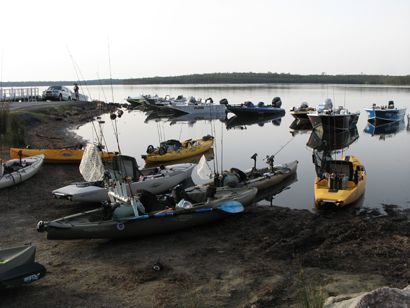
Introduction:
Avid readers of 'Sports Fishing Australia will note that 'Yak Fisher' covers various aspects in regard to fishing from kayaks. From current news and reviews, do it yourself features, advanced techniques and location articles, Yak Fisher continues to inspire and educate readers throughout Australia with its growing content. The Journalistic contributions range from salt to fresh, authored by offshore/ inshore soldiers, estuary bums, inland impoundment specialists right down to humble river rats.
As a Kayak Fishing publication, it’s in Yak Fishers best interest to portray any avenue relating to boating safety in a positive and encouraging manner Having covered areas such as 'Which Kayak for me?', 'Getting to know your kayak' and more recently 'Trip Preparation', covering all bases in an article can be a little tricky (everyone's situation differs). The last thing I want, or Yak Fisher wants is to portray a message of misunderstanding and/or bad advice.
With this is mind I'm sure you can understand my hesitation at providing any journalistic scope on 'By the book' Kayak Fishing safety. My interpretation of the subject will be different to others practices, be they typified examples or stubborn born peril. Rules and regulations regarding safety differ from state to state and who am I to try and encompass them all under the one heading. In some instances no amount of equipment or experience will prevent a tragedy. If you’re a keen kayak angler the time to be ‘Water Wise’ has already well and truely passed. Knowing how to observe conditions, understand particular hazards and employ decent and lawful safety practices is not only in your best interest but also your friends and your families.
This article contains excerpts on the understandings of wind and wave conditions, the tides and surf, positives of grouping and visibility, clothing densities and exposure to weather, subjects like what to do in a capsize and judging your own safety and ability. Rather than concentrate solely on my own thoughts and opinions regarding ‘dos and don’ts’ and the facets involved with kayak fishing safely I put a call out to certain industry representatives involved with water safety to seek their perception on the sport and about conducting kayak fishing safely.
As author of said article, myself and the magazine's editor (Mr. Rob Maya) are quite willing to work directly with a Public Relations team or unit and provide an article overview once completed. My enquiries related mainly to benefits and services provided to kayak anglers throughout Australia who wish to set out on waters patrolled or under observations by various bodies. Information pertained within this article is derived their rundowns on basic roles, services provided in QLD, NSW, VIC and TAS (Strongest reader base), Individual benefits of services to boaters/anglers, Importance of boating procedures, Importance of individuals being 'Water wise', wants of Marine Rescue/Coast Guard (Regarding Kayak Fishermen) and Communicating with their services.
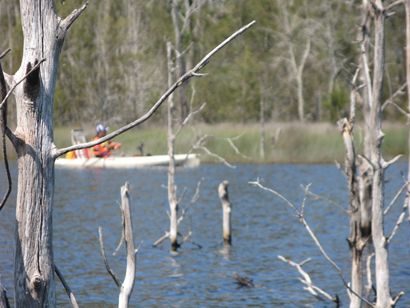
Contributions:
I recently spoke to my father John Steele, a Unit Commander of Marine Rescue NSW and he has provided readers with a few philosophical notes on the make-up of Search and Rescue (SAR) in Australia, particularly the East Coast and NSW. "You probably know some of this already, but just in case you don’t I’ll start with the big picture. The Australian Maritime Safety Authority (AMSA) through its Rescue Coordination Centre (RCC) is responsible for all searches at sea. On land this is devolved to the relevant State/Territory Police Force. In practice the Police normally run with incidents within its area of responsibility, namely out to 200nm off the coast and all inland waters. AMSA also monitors the distress beacons."
"As we are concentrating on SAR to kayaks I’ll concentrate on their sphere of operation, except where rescue beacons are activated. So, within the kayak’s realm, the Police are ultimately responsible for any SAR and they can call upon anyone to assist or even run a SAR operation, especially volunteer organisations. Within NSW the Marine Area Command (MAC) of the NSW Police has this responsibility not the general duties Police. So those 000 calls that go to the Police should then be on-forwarded to the MAC.
"The Police will use whatever assets at hand to assist them in conducting a search or rescue of a vessel in distress. This will include volunteer organisations such as Marine Rescue NSW and commercial and recreational fishing boats. If they have the facilities and manpower they will run with the show, however, they can ask organisations such as Marine Rescue NSW (MRNSW) to plan and conduct the search using their personnel and vessels, but all the time retaining overall responsibility. In NSW over 75% of all rescues are planned and run by MRNSW as the Police do not have the assets or the expertise on site."
"In NSW the volunteer organisations were amalgamated by the NSW government and Marine Rescue NSW was born in Jan 2010. It is the prime organisation that provides a service to the boating public, be it SAR, breakdown/tow assistance or boating education. There are a handful of privateers who run small “radio clubs” out of private homes on the coast but they receive no assistance from the government and have no status. Also, a small number of Coat Guard organisations mostly near the QLD border decided not to amalgamate with MRNSW." "Within the other states the Australian Volunteer Coast Guard predominates, especially down the East Coast and Tasmania. There are other groups in WA but they are out of our sphere but generally operate in the same manner as MRNSW."
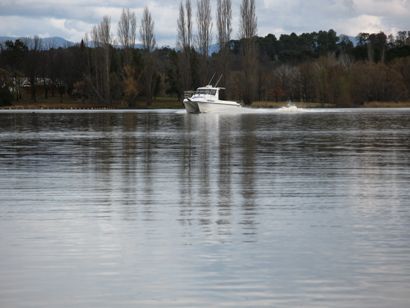
"In the event of an emergency being declared by a vessel either by radio, phone or relay the Police (MAC in NSW) must be contacted in the first instance to seek approval for the volunteer organisation to carry out a rescue/assist. This can be a little protracted at times but we have no choice. We cannot go ahead and do things unless it is a pure “NRMA type” assists (such as tow with flat battery or engine breakdown) without the police’s tasking. If the vessel is broken down some distance off shore, the police may also prefer to do it, but they generally consult with us as to our capabilities and the limitations that our vessels may have. "
"In the event of a fatality or serious injury the police are likely to attend as they are answerable to the coroner, but they generally ask for our help in the search or to keep ghouls at bay. If we find a body in the water for example, normally we wouldn’t retrieve it, just mark it with a buoy until the police arrive. If a survivor is found we would haul them out and give them first aid as we would be expected to do." "We would prefer kayaks as with all watercraft to log on with us by radio prior to them proceeding on the water. Obviously the best place to do it is just prior to launch, but as you know here at Eden, inside the breakwall at Quarantine Bay there is poor coverage, so we ask that watercraft call us once clear of the breakwall.
The type of information that will be asked for is Type and colour of kayak, operator’s name, telephone number ashore and onboard and the rego of the motor vehicle that the kayaker is using. Also, if you have an EPIRB. They will want to know your area of operation and the time you will be coming back to shore. So it can be a bit tedious. "Now if the kayaker is going to operate out of the same area on occasions, then perhaps they should visit the nearest Marine Rescue base and register all these details with them. They will then be given a unique number/registration that they can just quote to the radio operator and it will save them all the hassles of passing the info every time they go on the water. If the kayaker is alone, some bases will ask/suggest to call on the hour, every hour.
That’s not mandatory but gives an extra safety margin. What it means that the most the person would have been in the water for would be an hour, versus say half a day."
Another contribution of note was from Peter Hopkins, the Recreational Boating Manager of Marine And Safety Tasmania (MAST). MAST was approached with a request for a rundown on services available to kayakers and their perception of kayak anglers frequenting Tasmanian waters.
"MAST is responsible for the regulation of recreational boating in Tasmania. Kayaks and Canoes fall under our legislation as light weight craft. As a result, all kayakers must wear a life jacket whilst in use in Tasmanian waters." "Kayaking in Tasmania, like the rest of the country, is becoming very popular whether it be for fishing, long distance paddling or simply just a quite paddle on a Sunday afternoon. As it becomes more popular the concerns of our organization rises as well. We are seeing more and more inexperienced people getting on the water on these craft, people who may not be aware of the consequences of offshore winds, swells and general water safety and the requirement to seek an up to date forecast.
The craft are also getting bigger and being fitted with more and more gear such as sails, electric outboards, wells and fish rod holders." "We are seeing sit on top plastic rotor moulded craft being marketed as Kayaks so the old, general definition of a kayak is changing due to marketing. Concerns we have is that there is a difficulty getting to these people, with a boat it is easy, they are registered". "Another issue is that this type of marine equipment is now being sold by hardware stores and others, in the past the marine dealer has sold them and of course with this sale there is a degree of marine knowledge able to be passed t the consumer. With respect to some staff at other outlets that practical marine knowledge may not be apparent, they could be selling a bbq one minute , a box of nails next then a kayak."
"MAST has visited and contacted as many of these retailers as possible and as such we have produced a pamphlet, relative to Tasmania that should be attached to every craft sold in the state, we see this as a way of educating the user." "Kayaks as mentioned above are used for all sorts of things, we are now seeing them in inland lakes being used by trout fishermen, considering the water temperature of some of the lakes this is concerning, whilst even if wearing a PFD hypothermia can become an issue due to cold water shock immersion although if wearing a jacket survival rates are higher."
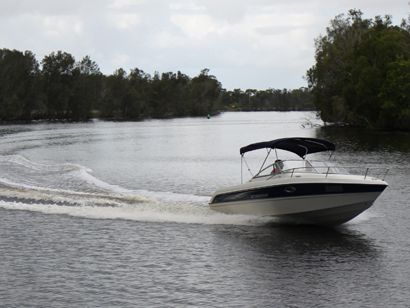
"Other concerns arise from people going offshore fishing in these craft, whilst some are experienced many are not. They are low in the water and can be lost in a swell with larger vessels. MAST would encourage a dan buoy flag to be set up in these situations. They are also found well offshore and this year whilst cruising to Deal Island from Flinders we came across a group of 6, very difficult to see from the wheel house of a 48 footer." "Whilst not legislated, we see it essential that people undertaking long offshore trips that they are properly equipped with the necessary communication aids. An EPIRB (or PLB), hand held VHF are two essential items together with a flare pack.
At the moment these are not mandated items but really why should a 50 footer have to carry all this equipment in open waters and a person in a sea kayak not? We have found however that there are many out there that do carry this equipment which is encouraging to see." Only last year a former Tasmanian premier was picked up 20 miles east of the pot boil at Flinders after activating his EPIRB, without that who knows what the result may have been. MAST encourages all those on the water to have a great time but unless you are safe and responsible the chances are you may not make it back."
Michael Collinson, an Ex Australian Maritime College senior lecturer in communications and EX AusSAR RCC communications also contributed some observations derived from his years as a seagoing radio officer dealing with Safety of Life at Sea (SOLAS).
“Anyone venturing onto coastal seawaters has a responsibility to themselves (their own safety), their family, others on the water, and those engaged in search and rescue, to make themselves familiar with the shore based marine radio communication facilities in their area and the services that they provide. It could be said that kayaks are more vulnerable to the sea and wind conditions than most other types of vessel and therefore kayakers should make extra safety measures.”
“Anyone venturing onto coastal waters should be aware of the marine radio organisations that provide services in the area, their hours of service and the frequencies/channels that are monitored. Always leave information with friends/relatives as to the intended voyage, even if it is intended to be only a short trip of a few hours. Contact the local radio base as you set off with details of the intended voyage. Kayaks have little draft and therefore can stay very close inshore. That may affect the ability to use VHF radio communication which suffers from geographical "blind spots".” “Kayaks should carry at least a hand held VHF Radio preferably with DSC. Kayak club members should visit the local VMR/ Coast Guard/Sea Rescue radio base and make known their activities in the area and establish a protocol with the local group.
If the local radio base does not know you are out on the water they cannot help you if are not able to communicate with them. If venturing beyond the VHF radio coverage of the local radio base kayakers should carry a 406 MHz EPIRB. The above comments imply that kayakers should gain a Marine Radio Operator's VHF Certificate of Proficiency (MROVCP) qualification.”
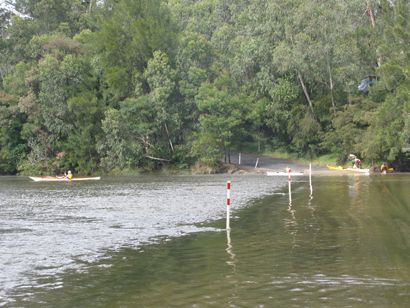
It was great to read that services such as MRNSW and MAST actively recognise the presence of kayak anglers. Some prime food for thought was conveyed and provides a valuable insight into the importance of always being 'Water Wise'. The information garnered from John Steele, Peter Hopkins and Michael Collinson is provided to readers unaltered and unedited. Their contributions surpassed my expectations and the understanding on how assistance works and what services are available to kayak anglers and recommended approaches to kayaking safely should now be clarified to readers in a clear and concise way.
I won’t delve deeper into communication from a kayak as I believe the advice offered is sage. Please note that a MROVCP is required to operate a VHF radio and certificates of proficiency are available. With so many kayak anglers on Australian waters operating VHF handheld radios without certificates I encourage qualification. ACMA recently sought views on VHF marine radio operator qualifications for recreational boaters published response papers are available online at: http://www.acma.gov.au/webwr/_assets/main/lib312023/acma_response_to_public_submissions_vhf_marine_radio_review.doc
This is neither the time nor place to envelope proceedings into my own kayak fishing equipment safety regime either, apart from discussing PFD laws. It’s disturbing though that a loop hole remains in the system, such as kayak anglers determining a fishing ski is a surf ski, not a kayak, when adhering to PFD laws. A surf ski is exempt from the safety equipment requirements of the Marine Safety (General) Regulation 2009. Therefore, according to law lifejackets are not required to be worn or carried on surf skis on NSW waters (this includes both ocean and enclosed waters). This has left the PFD line so blurry that many will dismiss the suggestion of simply wearing one as some kind of ‘Nanny State’ bullying. PFDs are a key safety feature in recreational boating.
An National Marine Safety Committee (NMSC) study found that people who survived a boating incident were more than two times more likely to have been wearing a PFD compared to those who died and concluded that if PFD usage increased to 50%, 2-3 lives could be saved nationally each year. It's important that each person on board has an approved personal floatation device for the activity and conditions that they intend to boat in. If unsure, check with your local marine agency.
New PFDs starting to appear on the shelves, manufactured to the new Australian Standard 4758: Level 150 - which is similar to inflatable PFD Type 1 and suitable for offshore use Level 100 - which is similar to PFD Type 1 and the minimum requirement for offshore use Level 50 - which is similar to PFD Type 2 Level 50 Special Purpose (50s) - to replace PFD Type 3 Please note that some states have applied time limits to accepting older existing PFDs based on when they were manufactured. If you have an existing PFD made to the old standards, it is important that you check with your local marine safety authority to find out if it is still accepted.
A PFD Type 1 is designed to keep you in a safe "face up" floating position. There are two types - fixed buoyancy and those which are self or manually inflatable. It can be worn for general boating in all waters. A PFD Type 2 or buoyancy vest has less buoyancy than a PFD Type 1 and may not rotate you to a "face up" floating position. Normally used for sailing, waterskiing, kayaking, canoeing, wind surfacing and on personal watercraft. A PFD Type 3 has similiar buoyancy characteristics as PFD Type 2 but is manufactured in a wider range of colours. Favoured by waterskiers and PWC riders, it is also available as a built in garment (eg waterskiing wet suit).



